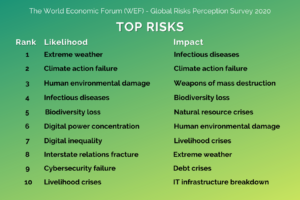 We recognize that business interruption due to COVID-19 pandemic is a game changer. Small and medium-sized businesses (SMEs) and not-for-profit organizations have been hurt the worst. Owners, stakeholders, and senior managers have experienced many other economic downturns, natural disasters and geopolitical events that altered the way business had to be done. However, the consequences of this pandemic are markedly different.
We recognize that business interruption due to COVID-19 pandemic is a game changer. Small and medium-sized businesses (SMEs) and not-for-profit organizations have been hurt the worst. Owners, stakeholders, and senior managers have experienced many other economic downturns, natural disasters and geopolitical events that altered the way business had to be done. However, the consequences of this pandemic are markedly different.
Some organizations have been forced to cease or to drastically reduce their operations whereas others are adjusting their operations and systems and seizing the opportunities that arise from the situation.
For organizations to survive they need to navigate through chaotic and emerging business changes, avoid poor performance and become agile to ensure their long-term success. To successfully achieve their goal, there is a need to initiate a discussion of “what is next?”, “does the firm’s business model need recalibration?” and “what new risk measures, especially opportunities, the ‘new normal’ will make available to the firm?”
Often smaller organizations have relatively few technical resources and, for the most part, the focus is primarily to keep existing systems working. They often lack substantial planning for future business requirements. Many a times, the environments contain disparate systems resulting in their inability to address the changing business systems’ needs. They often overlook their key potential threats and opportunities, and rely on their insurers, contractors, vendors, and suppliers to manage these risks. Emerging risks or black swan events are not on their radar screen, as evidenced by the COVID-19 and geopolitical oil crises. In such cases, the real deterrent, so to speak, has been the operating model of firms that has yet to adjust to the ‘new normal’.
The post-pandemic world could be the window of opportunity, or necessity, to accelerate the need to revisit the organization’s business model and its risk management (RM) strategy.
According to Jean-Claude Trichet, former president of the European Central Bank, “A lesson of the crisis would be to increase resilience of all economies and entities, public and private, and prepare for what we’re seeing now—namely, a sudden stop of part of both production and demand in many economies of the world. We shouldn’t be depending on only one source for any particular service or manufactured good just because it keeps down costs. The idea of risk management and risk diversification at the level of the planet will be a key part of the concept of sustainable globalization.”
This is exemplified by the federal government’s announcement on May 11th, 2020 that risk-based climate change is one of the main conditions of the Large Employer Emergency Financing (LEEF), which requires a company to articulate how it plans to manage the risk of climate change in the future.
At virtually every stage most SMEs need to examine their vulnerability to corporate risk and their management of it. Having a robust Risk Management (RM) Program protects the corporate wealth and its assets by helping the company’s managers to be highly aware of their responsibilities to mitigate threat and to seize opportunities.
These organizations need a consistent and proven approach when they conduct their RM process. Once the company’s key risk areas are identified, a comprehensive and detailed risk treatment approach is necessary to ensure critical areas are appropriately addressed. Some examples are areas like policy making, priority setting, resource allocation, decision making, as well as how the plans for managing key corporate risks are developed, measured and reported.
Typically, most RM processes will always contain the standards and required structures. However, an area that is often overlooked is the opportunity part of the RM continuum. While risk assessment and mitigation may be the starting point, organizations can gain a competitive advantage by taking the time to include a thorough assessment of the opportunities, and can incorporate such opportunities into their business vision and planning.
It is of importance that SMEs should adopt an integrated, efficient and cost effective risk management process to identify and assess key risks arising from entering into contracts and subsequently implementing a new seamless, integrated strategy to deal with the liability, indemnification, and insurance in their contractual requirements. A common criteria should be developed to justify significant deviations from RM industry practices. This best practice is likely to result in reducing the cost of risk to the municipality and a marked improvement in its contracting relationship with its stakeholders.
Often for SMEs, the RM exercise is seen as an additional overhead cost. However, such specialized services can be effectively obtained by engaging the services of an expert RM professional on an as-needed basis.
Risk management is the type of business continuance insurance continuity assurance mechanism that actually always pays (out).
Awad Loubani
Senior Advisor



